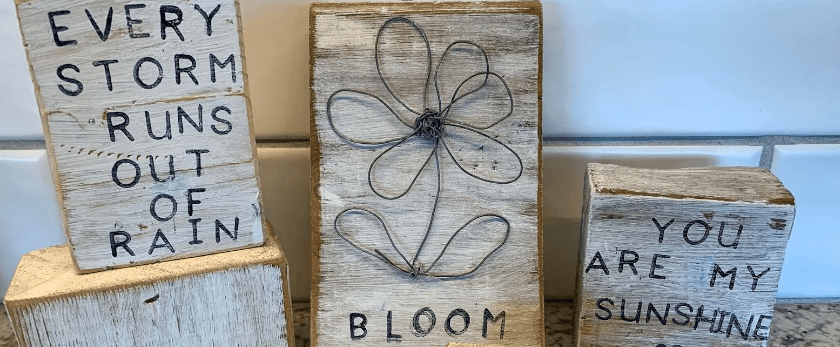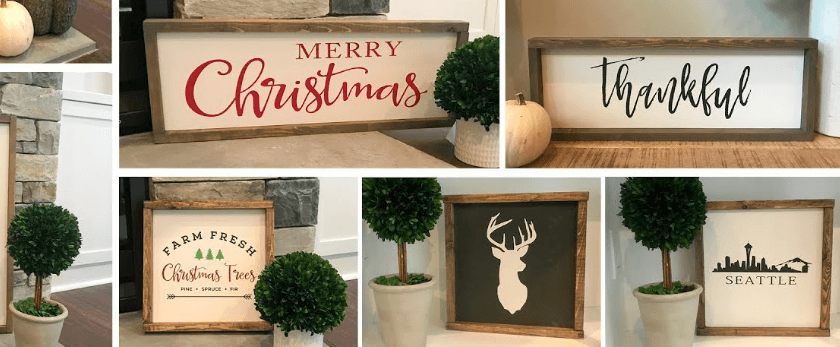In today's world, where environmental concerns are at the forefront of global discussions
It's important for each of us to do our part in reducing our carbon footprint. One simple and effective way to contribute to a greener future is by making our own homemade signs. Not only is this a fun and creative activity, but it also helps to reduce waste and promote sustainable living. In this article, we'll explore why homemade signs are better for the environment, what materials are needed, and provide step-by-step directions for making your own signs.
Why Are Store-Bought Signs Bad for the Environment?
Store-bought signs may seem like a convenient option, but they often come with a heavy environmental cost. Here are some reasons why:
- Non-Biodegradable Materials: Most store-bought signs are made from non-biodegradable materials such as plastic, vinyl, and foam board. These materials take hundreds of years to decompose, contributing to the growing problem of plastic pollution in our oceans and landfills.
- Harmful Chemicals: The production of store-bought signs involves the use of harmful chemicals that can be damaging to the environment. These chemicals can leach into the soil and water, causing pollution and harm to wildlife.
- Excessive Packaging: Store-bought signs are often packaged in layers of plastic and cardboard, which adds to the already overflowing landfills. This packaging also requires energy and resources to produce, contributing to carbon emissions.
- Short Lifespan: Due to their cheap and disposable nature, store-bought signs have a short lifespan and often end up in the trash after a single use. This creates a cycle of constant consumption and waste, which is not sustainable for our planet.
Why Making Your Own Signs is Better for the Environment
Making your own signs may require a bit more effort, but the benefits for the environment are worth it. Here's why:
- Use of Sustainable Materials: By making your own signs, you have control over the materials used. You can opt for sustainable and biodegradable options such as cardboard, paper, or wood. These materials are easily available, affordable, and have a lower impact on the environment.
- No Harmful Chemicals: When making your own signs, you can avoid the use of harmful chemicals and opt for eco-friendly alternatives such as water-based paints and natural dyes. This not only reduces pollution but also ensures the safety of your family and pets.
- Minimal Packaging: Homemade signs require minimal packaging, as they can be made from materials that are already available in your home. This reduces the amount of waste generated and saves resources.
- Reusable and Durable: Homemade signs can be reused multiple times, reducing the need for constant production and consumption. With proper care, they can last for years, making them a more sustainable option in the long run.

What You'll Need to Make Homemade Signs
Making your own signs is a simple and affordable process. Here are the materials you'll need:
- Cardboard or Wood: These materials are easily available and can be found in most households. They are also biodegradable and can be recycled after use.
- Paint or Markers: You can use water-based paints or markers to decorate your signs. These are non-toxic and have a lower impact on the environment.
- Scissors or Craft Knife: These tools will come in handy for cutting and shaping your signs.
- Stencils or Templates: If you're not confident in your drawing skills, you can use stencils or templates to create your designs.
- Natural Dyes (Optional): If you want to add color to your signs, you can use natural dyes made from fruits, vegetables, or spices. These are non-toxic and biodegradable.
Step-by-Step Directions for Making Homemade Signs
Now that you have all the materials, here are the steps to follow to make your own homemade signs:
- Step 1: Choose Your Material - Decide on the material you want to use for your sign. Cardboard is a great option for temporary signs, while wood is more durable and suitable for long-term use.
- Step 2: Cut and Shape Your Sign - Using scissors or a craft knife, cut your material into the desired shape and size for your sign. You can also use a stencil or template to create a more precise shape.
- Step 3: Decorate Your Sign - This is where you can get creative! Use paint, markers, or natural dyes to decorate your sign. You can also add text or images to convey your message.
- Step 4: Let it Dry - If you're using paint or natural dyes, allow your sign to dry completely before moving on to the next step.
- Step 5: Add a Stake (Optional) - If you want to display your sign outdoors, you can attach a stake to the back of your sign using glue or tape. This will make it easier to place in the ground.
- Step 6: Display Your Sign - Your homemade sign is now ready to be displayed! You can use it for events, protests, or even as a decoration in your home.
Proper Disposal of Homemade Signs
When your sign is no longer needed, it's important to dispose of it properly to minimize its impact on the environment. Here are some options for responsible disposal:
- Recycle: If your sign is made from cardboard or paper, it can be recycled. Make sure to remove any non-recyclable materials such as tape or glue before recycling.
- Compost: If your sign is made from natural materials such as wood or natural dyes, it can be composted. This will help it break down and return to the earth.
- Reuse: If your sign is still in good condition, consider reusing it for future events or repurposing it for another use.
- Proper Disposal: If your sign cannot be recycled or composted, make sure to dispose of it in the appropriate waste bin. Do not litter or leave it in the environment.
In Conclusion
Making your own homemade signs is a simple and effective way to contribute to a greener future. By using sustainable materials and avoiding harmful chemicals, you can reduce your environmental impact and promote a more eco-friendly lifestyle. So next time you need a sign, skip the store-bought option and get creative with your own homemade version. Together, we can make a positive impact on the planet and create a more sustainable future for generations to come.










